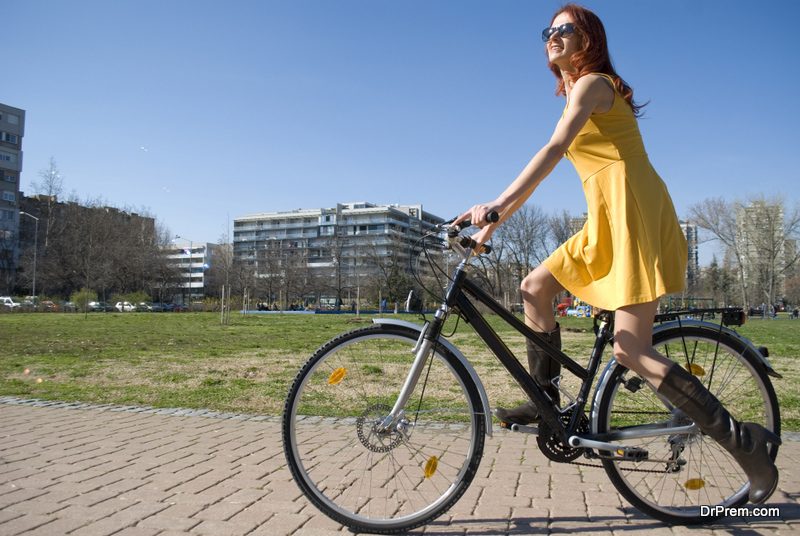Transport systems in urban areas around the world have to be upgraded/updated to fight the problem of emissions and global warming due to transport. Citizens are advised to use public transport in lieu of private transport to combat climate change and traffic congestion. According to the Arcadis’ 2017 Sustainable Cities Mobility Index, which took into consideration 23 factors under the sections of ‘Planet’, ‘People’ and ‘Profit’, some cities around the world have done all they can to improve their public transport system. Let’s take a look at the best cities in the world for sustainable transport:
15 best cities in the world for sustainable transport
Hong Kong
 Hong Kong gained the top spot in Arcadis’ latest mobility index. This Asian city topped the People category, due to its well-connected and innovative metro network. It was found that the metro had the highest number of trips taken by the people. It came sixth in the Profit sub category.
Hong Kong gained the top spot in Arcadis’ latest mobility index. This Asian city topped the People category, due to its well-connected and innovative metro network. It was found that the metro had the highest number of trips taken by the people. It came sixth in the Profit sub category.
Stockholm
Stockholm is another of the green cities, which sees 328 million people using the public transport every year. The city is famous for its use of biofuel by taxis and private cars, and has planned to become fossil free by the year 2040.
Buenos Aires
 The city home to 3 million, introduced two rapid transit services (bus). It cut down the 20 lane Avenue 9 de Julio to just 10 lanes. The other 10 lanes been converted to an amazing ‘surface subway’ which combines speed with the comfort of the subway. The surface ‘bus subway ’now has made it possible for people to cross the city in just 14 minutes. Introducing these measures has made Buenos Aires’ urban transportation system an example the rest of the world sit up and take notice.
The city home to 3 million, introduced two rapid transit services (bus). It cut down the 20 lane Avenue 9 de Julio to just 10 lanes. The other 10 lanes been converted to an amazing ‘surface subway’ which combines speed with the comfort of the subway. The surface ‘bus subway ’now has made it possible for people to cross the city in just 14 minutes. Introducing these measures has made Buenos Aires’ urban transportation system an example the rest of the world sit up and take notice.
Vienna
Vienna has ambitious sustainable transport plans, as it aims to make 20sq km of green space accessible to all its citizens, which would take just a three minutes to reach by walking, from any point in the city. The city came sixth in the mobility index for environment and 9th for the efficiency to support and grow businesses using its urban mobility system.
Frankfurt
 Frankfurt is the bustling business centre for Germany and Europe. It has 360,000 commuters daily but still has managed to keep emissions down. It has topped the Planet sub category in the Arcadis latest mobility index due to its infrastructure to support eco friendly electric vehicles including electric cars and cycles. It has many green spaces in the city and very low air pollution. Though 80% of transport is still private transport, the city has set limits on parking and the ‘bike+ride’ scheme has made it one of the best cities in the world for sustainable transport.
Frankfurt is the bustling business centre for Germany and Europe. It has 360,000 commuters daily but still has managed to keep emissions down. It has topped the Planet sub category in the Arcadis latest mobility index due to its infrastructure to support eco friendly electric vehicles including electric cars and cycles. It has many green spaces in the city and very low air pollution. Though 80% of transport is still private transport, the city has set limits on parking and the ‘bike+ride’ scheme has made it one of the best cities in the world for sustainable transport.
Seoul
50% of journeys undertaken in Seoul are with public transport. The public transport system is extremely reliable, and the comprehensive coverage allows citizen to forego private vehicles. Heated seats, TV screens and heated seats on the metro go a long way to encourage city metro use.
Zurich
 Switzerland’s largest city sees 40% of its journeys by public transport. The city has invested heavily on trams, trains and buses. This has enabled people to use public transport for their needs, thus making Zurich a sustainable city.
Switzerland’s largest city sees 40% of its journeys by public transport. The city has invested heavily on trams, trains and buses. This has enabled people to use public transport for their needs, thus making Zurich a sustainable city.
Paris
Paris was among the world’s first countries to introduce bike-sharing schemes, convert highways for exercise and walking, and making the city pedestrian friendly. Its plans for more tram lines and bus lanes will make it one of the best cities in the world for sustainable transport.
Amsterdam
 Amsterdam has probably more cycles than people! It’s therefore known as the world’s cycling capital. Before 1970, cars dominated private transport, but due to the rising number of fatalities because of road traffic led to the city being completely redesigned, to favor walking and cycling. Though most of the city has low air pollution, the areas of the city where cars are allowed still suffers from dense air pollution, breaching EU’s polluted air limits. Still, the city fares better than many other cities in the world.
Amsterdam has probably more cycles than people! It’s therefore known as the world’s cycling capital. Before 1970, cars dominated private transport, but due to the rising number of fatalities because of road traffic led to the city being completely redesigned, to favor walking and cycling. Though most of the city has low air pollution, the areas of the city where cars are allowed still suffers from dense air pollution, breaching EU’s polluted air limits. Still, the city fares better than many other cities in the world.
Copenhagen
Copenhagen has rehauled its urban transportation system and constructed amazing bike lanes which the city’s residents love to use. People don’t walk much and prefer to use their own cars, but still the bike lanes have been an innovative addition to the city’s transport system.
Singapore
 Singapore’s urban transportation system is gearing up to meet the demands of 6 million population by 2030. The city state has planned for two more underground train lines, a new eco friendly airport and high-speed train link from Kuala Lumpur to Singapore. It is one of the best cities in the world for sustainable transport as 66% of the journeys undertaken by residents are by public transport. The government wants to increase this to 75% by the year 2030. It’s therefore one of the green cities of the world.
Singapore’s urban transportation system is gearing up to meet the demands of 6 million population by 2030. The city state has planned for two more underground train lines, a new eco friendly airport and high-speed train link from Kuala Lumpur to Singapore. It is one of the best cities in the world for sustainable transport as 66% of the journeys undertaken by residents are by public transport. The government wants to increase this to 75% by the year 2030. It’s therefore one of the green cities of the world.
Prague
Prague has been ranked second in the Profit sub category of the Arcadis index. It has received this ranking due to short commuting time, public transport affordability and utilization and economic opportunity. Its efforts to include green technology as well as including mass cycle rides and electric car rentals make it one of the best cities in the world for sustainable transport.
London
 London’s public system too is used frequently by its people, with 43% journeys completed by public transport. The Crossrail 2 and HS2 Seek to improve the connectivity and capacity of London’s public transport.
London’s public system too is used frequently by its people, with 43% journeys completed by public transport. The Crossrail 2 and HS2 Seek to improve the connectivity and capacity of London’s public transport.
Oslo
Oslo has taken steps to keep it streets less focused on cars, and has made efforts to beef up the cycling infrastructure. It has rolled out car free areas and converted car parking lots into bike lanes.
Suwon, South Korea
 Suwon, located to the south of the city Seoul, organized a one month festival to demonstrate to residents how they could get around without depending on automobiles. The festival allowed people to experience the clean air due to a car free month. Though the festival was organized in 2013, the city retained the infrastructure and introduced car-free weekends.
Suwon, located to the south of the city Seoul, organized a one month festival to demonstrate to residents how they could get around without depending on automobiles. The festival allowed people to experience the clean air due to a car free month. Though the festival was organized in 2013, the city retained the infrastructure and introduced car-free weekends.
The world over, cities are facing the dual problem of swelling population and pollution due to fossil fuel use. Those cities which improve their public transport will reduce air pollution and congestion, and become sustainable cities of the future.



